Crafts › Crates of Thebes › Daily Life in Ancient Egypt » Origins and History
Articles and Definitions › Contents
- Crafts › Origins
- Crates of Thebes › Who Was
- Daily Life in Ancient Egypt › Origins
Ancient civilizations › Historical places, and their characters
Crafts › Origins
Definition and Origins
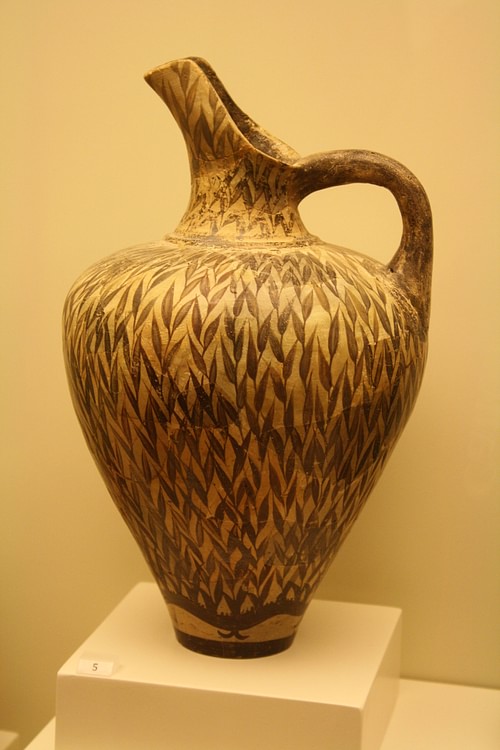
The word 'Craft' comes from the Middle English word for 'strength' or 'skill' derived from the Old English word craeft which comes from Old High German kraft, for strength, and means “skill in planning, making, executing” and, by extension, “an occupation or trade requiring skill” and crafts, then, being those objects resulting from the application of that skill ( Merriam-Webster Dictionary ). Every civilization has developed their own crafts and the term can be applied to numerous aspects of each of them. Within the scope of this article the term is applied only to hand-crafts including ceramics and metal-working but it should be understood that the term is equally applicable to writing and other forms of expression.
Crafts in the ancient world, both in their purpose and how they were manufactured, were as varied as the cultures which produced them. In ancient Mesopotamia, crafts were produced both by order of the state and privately. As early as 6500 BCE flax textiles were in use in the region known as Tepe Sabz (modern day Iran) and flax was woven both privately and by state workers prior to the rise of wool. From the city of Ur we have the Sumerian Standard of War and the Standard of Peace, both commissioned by the State and wrought by those whom, today, would be known as government employees.
Crafts in the ancient world, both in their purpose and how they were manufactured, were as varied as the cultures which produced them. In ancient Mesopotamia, crafts were produced both by order of the state and privately. As early as 6500 BCE flax textiles were in use in the region known as Tepe Sabz (modern day Iran) and flax was woven both privately and by state workers prior to the rise of wool. From the city of Ur we have the Sumerian Standard of War and the Standard of Peace, both commissioned by the State and wrought by those whom, today, would be known as government employees.
At the same time, however, there were many private artists producing their own, more personal, works (also as early as 6500 BCE, from which time pottery has been found) such as the statue Ram Caught In A Thicket from Ur c. 2800 BCE, an elaborate piece composed of shells, lapis lazuli and gold depicting a ram (or goat) struggling to free itself from a bush. While the Sumerian standards are utilitarian works, providing a narrative of the culture at peace or at war, pieces like Ram Caught In A Thicket often depicted scenes from daily life or symbolic representations of the gods as it has been speculated that the Ram statue symbolized the male energy principle of the god Tammuz caught in the "thicket" of the female deity Inanna / Ishtar.Inanna/Ishtar is regularly depicted as a difficult character who often ensnared her lovers in webs of difficulty.
As early as 6200 BCE copper was being smelted in Anatolia in the south of the Mesopotamian region and copper grew in importance as it became more readily available. It would eventually prove to be an increasingly valuable commodity in trade as well as for domestic use.
AS EARLY AS 6500 BCE FLAX TEXTILES WERE IN USE IN THE REGION KNOWN AS TEPE SABZ (MODERN DAY IRAN) AND FLAX WAS WOVEN BOTH PRIVATELY AND BY STATE WORKERS.
In ancient Egypt the most important artisans were the metalsmiths who produced the bowls, vases, cups, statues and figurines, even the swords and daggers, one sees today in museums around the world. The metalsmiths worked primarily in copper mined from the Sinai peninsula until the Middle Kingdom (2040-1782 BCE) when bronze (a mixture of copper and tin) was introduced, the tin coming from the hills of Elam southeast of Babylon.
Without a doubt, however, the most widely used metal in ancient Egypt was gold which was mined in plenty from the quartz-bearing rock in the eastern desert and south of Egypt in Nubia and the Sudan. The famous tomb of Tutankhamun, discovered by Howard Carter in the early 1920's CE is the best testament to the many uses the metalsmiths could put gold to, as they fashioned the substance into everything from the ornate death mask to the coffin to the cups, bracelets and jewelery found in the tomb. According to the historian Herodotus, the Egyptian metalsmiths were known as the most skilled artisans in the world and their surviving works bear witness to the truth of Herodotus' claim.
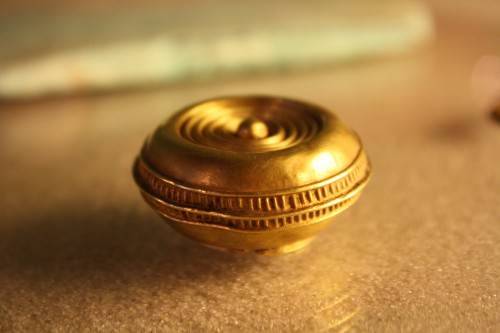
Neolithic Gold Bead
These stories could range from mythological tales to personal family narratives and were most famously admired by the English poet John Keats in his Ode on A Grecian Urn in which he extols the virtues of the “still unravished bride of quietness” and longs for the eternal youth and beauty depicted on the urn. Other ceramic vessels were the amphora used primarily for wine and found in abundance in the wrecks of the Phoenican vessels Tanit and Elissa discovered in 1999 CE by Bob Ballard.The hydria (used primarily for water) and the crater were two other types of ceramic products. The crater was a broad rimmed ceramic supported by a short cylinder on a base; both forms are still in use today as vases and mixing bowls.
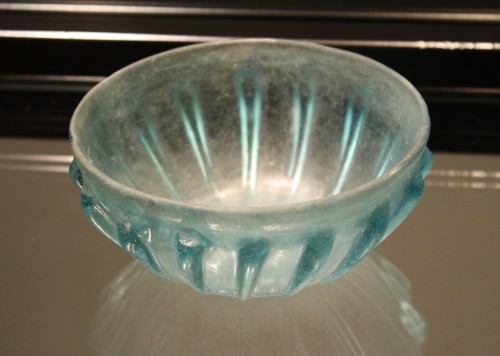
Roman Glass Bowl
In the first milennium BCE, the Phonecians would send their ships up across the Atlantic to what would become the English isles to load on great quantities of tin to mix with the plentiful copper of the Mediterranean to create bronze. Why the Phoenicians did not also mine from the Elam hills, as the Egyptians did, is unclear. In 200 BCE iron manufacturing in the Celtic world, starting around the area now known as Cornwall, underwent a significant boom and the iron age would change every aspect of the lives of those who lived in the Celtic lands and beyond.
Crafts were an integral part of the lives of the people who created and used them. More importantly, perhaps, they were an expression of the culture and of the lives of the people at a given time. Archaeologists regularly report that they value ceramics in their finds above gold, silver, or other precious treasure because ceramics tell the most accurate and honest story about daily life at a site. The people of the past, just like those of today, did not always lead lives of grand adventure or excitement but still had stories to tell of great passion and enduring fascination. These stories were told through the crafts they created and today, many thousands of years later, one may read these stories still and admire the works of the early artists.
Crates of Thebes › Who Was
Definition and Origins
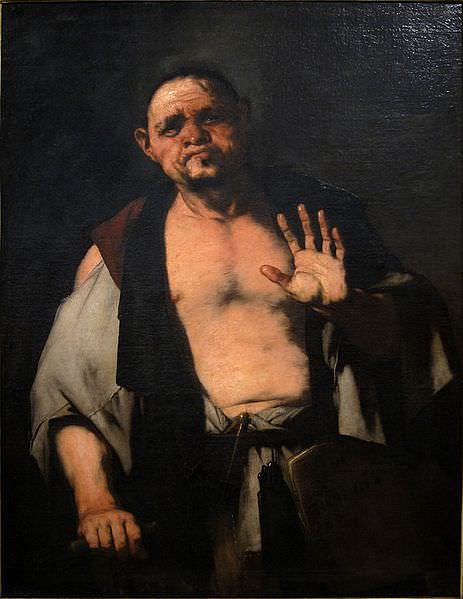
Crates of Thebes ( c. 360-280 BCE) was one of the most important Cynic philosophers of ancient Greece. He was born to a wealthy family in Thebes but gave away his inheritance after realizing the futility of material possessions. He then moved to Athens where he studied philosophy with Diogenes of Sinope (c. 404-323 BCE). Like Diogenes, Crates lived on the streets, owned nothing, and lived his philosophy very publicly. His most famous student was Zeno of Citium (c. 336-265 BCE) who founded the Stoic School of philosophy which would later have a significant impact on the culture of Rome and later cultures and civilizations up to the present day.
EARLY LIFE & CONVERSION
Crates grew up in Thebes, the son of a wealthy family and, as a matter of course, would have followed in his family's business.One night, however, he saw a play of the Tragedy of Telephus, which relates the story of how King Telephus, the son of Heracles, was wounded by Achilles. The wound would not heal and, when Telephus consulted the oracle, he was told it could only be healed by the one who inflicted it. Telephus disguised himself as a beggar and went to Achilles' camp, where he managed to convince Achilles to heal him with the same spear that wounded him. No ancient sources explain what it was about this play that so moved Crates, but perhaps it was that not even a king, and son of the demi-god Heracles, was immune to pain and loss. It could also be that when Telephus assumed the disguise of the beggar, he was more effective in achieving his goal of being healed than when he was a king. Whatever it was, Crates dispersed his personal wealth to the people of Thebes, left his family, and went to Athens to study philosophy.
CRATES ARRIVED AT HIPPARCHIA'S HOUSE, DISROBED, AND STANDING NAKED IN FRONT OF HER, SAID, "HERE IS THE BRIDEGROOM AND THESE ARE HIS POSSESSIONS - CHOOSE ACCORDINGLY."
LIFE IN ATHENS
To say that Crates "studied" with Diogenes of Sinope gives the impression of a master teaching a student, perhaps in a classroom; this image is far from the truth of the relationship between the two men. Diogenes lived his philosophy daily on the streets of Athens, and Crates would have learned as much from his example as from his lectures. Diogenes' philosophy was developed from that of his teacher, Antisthenes (who had been a student of Socrates ), and emphasized the rejection of material wealth, objects, and social status in favor of a life lived simply and in accordance with nature. There was no need for personal possessions according to the Cynic view, because one was only going to lose them and, more importantly, they distracted one from the act of living one's life. This same could be said of social status or education (in the formal understanding of the word) or social etiquette; all of these concepts were unnatural and devised by human beings to help them give shape and order to the world but, really, they were artificial concepts that separated people from the possibility of living honest lives. The famous story of Diogenes of Sinope looking for a "human being" on the streets of Athens by holding up a lantern to people's faces in broad daylight is an example of how the Cynics tried to wake people up from the dream world they said that most lived in. Crates followed Diogenes' example but, it seems, had a much gentler approach.
The 3rd century CE writer Diogenes Laertius, who wrote on the lives of many Greek philosophers, claims that Crates was known as "the door opener" because he would regularly walk into people's houses to give them counsel, uninvited, and then leave when the situation was resolved. He was a physically unattractive man but had such a good spirit and was always so cheerful that the people of Athens welcomed him into their homes. One of the best examples of Crates' "door-opening" concerns a young man who would become a student of his and, later, his brother-in-law. Metrocles of Marneia was studying formal philosophy at Aristotle 's Lyceum under the teacher Theophrastus who ran the school in the same way Aristotle had and required students to give lectures on the subjects they had studied. The historian William D. Desmond relates the tale of Metrocles' enlightenment as found in the work of Diogenes Laertius:
Once while declaiming, Metrocles farted audibly and was so ashamed that he shut himself away from public view and thought of starving himself to death. But Crates visited him, fed him with lupin-beans, and advanced various arguments to convince him that his action [of farting] was not wrong or unnatural and had been for the best in fact. Then Crates capped his exhortation with a great fart of his own. "From that day on Metrocles started to listen to Crates' discourses and became a capable man in philosophy" (DL 6.94). Such is Diogenes Laertius' laughable deadpan conclusion, and this is the Cynic's point: everything is laughable, there is nothing serious in mortality, and one should not wrinkle one's brow with Aristotelian jargon or be ashamed of any natural functions (28).
To Crates, anything that did not proceed from nature was a trap and, among the many, were the traps of social etiquette, formal education - which only cluttered one's mind with useless facts - and, especially, social status and wealth. He is said to have driven his family away with a stick when they came to Athens to return him to his former life of ease and luxury back in Thebes.
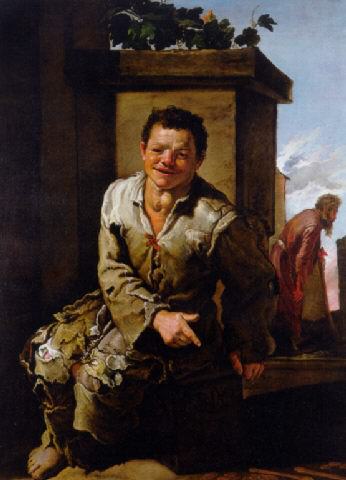
Crates of Thebes
CRATES & HIPPARCHIA
Metrocles was the son of a wealthy Athenian family who were no doubt displeased when he dropped out of the Lyceum to live on the streets and follow Crates' teaching. Their displeasure definitely increased, however, when Metrocles introduced Crates to his younger sister Hipparchia. Hipparchia was a very enviable match in the elite circles of Athens and had many suitors.When she met Crates, however, she refused all of them and said she would marry only Crates or else kill herself. Her parents asked Crates if he would come reason with her and talk her out of this decision. He arrived at the house, disrobed and, standing naked in front of her, said, "Here is the bridegroom and these are his possessions - choose accordingly." Instead of dissuading Hipparchia, this only made her love him more and she left her family and wealth to marry him and live with him in poverty on the streets. They consummated their marriage on the porch of a public building in downtown Athens reasoning, as they did in all things, that if there was nothing unnatural about sex in private, there was nothing wrong with it in public.Hipparchia would bear Crates two children, a son and daughter, and lived with him for the rest of his life.
Crates is said to have taken his son, Pasicles, to brothels when the boy was older as an introduction to sex. He told Pasicles that sex was completely natural and simple and that traditional marriages and accepted etiquette concerning sexual matters were traps to be avoided. When his daughter (whose name is not known) reached maturity, he told her she should have trial marriages for one month to find a suitable mate instead of marrying and living as society expected her to. Crates emphasized non-violence in his teachings and, as a part of that belief, felt that no one should have to submit to another's will in marriage just because social custom and the laws of the city encouraged such behavior. One should strive to be free in all things and master oneself and one's own problems before worrying about others and theirs. He was known to never drink wine or any intoxicant, but only water, and to eat only what was necessary to live, but never to excess. In summer he wore a winter cloak to teach himself to bear adversity in the body and, in winter, only rags. He died of natural causes in his old age on the streets of Athens.
LEGACY
Both Crates and Hipparchia are said to have written a significant number of philosophical works but very few of Crates' lines, and none of Hipparchia's, exist in the present day. Hipparchia traveled and taught daily with Crates, wearing men's clothing and conversing with males as an equal. It is thought she took over teaching his students after his death. Crates taught completely by example, and it is thought his lectures were actually discussions and his classroom most certainly the streets of Athens. Among his pupils was Zeno of Citium, a former merchant of means, who was shipwrecked on one of his trips to Athens. He found a copy of Xenophon 's Memorabilia in a book store and was so impressed by the figure of Socrates in the work that he abandoned his business and devoted himself to philosophy, studying first with Crates.
Zeno developed the Cynic philosophy into the philosophic discipline of Stoicism which would be further developed by the Roman philosopher Epictetus (50 CE-130 CE) and become one of the most important and influential belief systems of ancient Rome. Stoicism, in time, came to influence later philosophical systems and became especially popular in the 1960's CE among the counter-culture who were largely introduced to Stoic concepts through Henry David Thoreau's Walden(published in 1854 CE), which emphasized the importance of living one's life truly through simplicity. Crates' vision of a world based on justice, non-violence, and simplicity of living, as developed by Zeno, may have also influenced Thoreau's other work, Civil Disobedience (published 1849 CE), which inspired Gandhi in his non-violent resistance to British rule in India and, later, Dr. Martin Luther King Jr.'s civil rights movement in the United States of America.
Daily Life in Ancient Egypt › Origins
Ancient Civilizations
The popular view of life in ancient Egypt is often that it was a death-obsessed culture in which powerful pharaohs forced the people to labor at constructing pyramids and temples and, at an unspecified time, enslaved the Hebrews for this purpose. In reality, ancient Egyptians loved life, no matter their social class, and the ancient Egyptian government used slave labor as every other ancient culture did without regard to any particular ethnicity. The ancient Egyptians did have a well-known contempt for non-Egyptians but this was simply because they believed they were living the best life possible in the best of all possible worlds. Life in ancient Egypt was considered so perfect, in fact, that the Egyptian afterlife was imagined as an eternal continuation of life on earth. Slaves in Egypt were either criminals, those who could not pay their debts, or captives from foreign military campaigns. These people were considered to have forfeited their freedoms either by their individual choices or by military conquest and so were forced to endure a quality of existence far below that of free Egyptians.
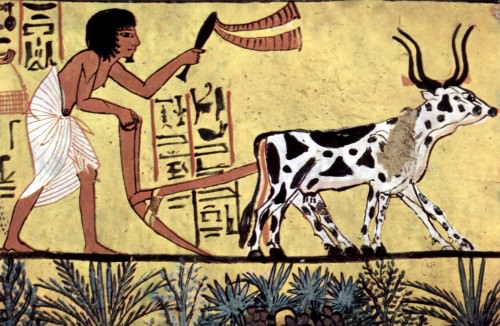
Plowing Egyptian Farmer
The individuals who actually built the pyramids and other famous monuments of Egypt were Egyptians who were compensated for their labor and, in many cases, were masters of their art. These monuments were raised not in honor of death but of life and the belief that an individual life mattered enough to be remembered for eternity. Further, the Egyptian belief that one's life was an eternal journey and death only a transition inspired the people to try to make their lives worth living eternally. Far from a death-obsessed and dour culture, Egyptian daily life was focused on enjoying the time one had as much as possible and trying to make other's lives equally memorable.
THROUGH THE OBSERVANCE OF BALANCE & HARMONY PEOPLE WERE ENCOURAGED TO LIVE AT PEACE WITH OTHERS & CONTRIBUTE TO COMMUNAL HAPPINESS.
Sports, games, reading, festivals, and time with one's friends and family were as much a part of Egyptian life as toil in farming the land or erecting monuments and temples. The world of the Egyptians was imbued with magic. Magic ( heka ) predated the gods and, in fact, was the underlying force which allowed the gods to perform their duties. Magic was personified in the god Heka (also the god of medicine) who had participated in the creation and sustained it afterwards. The concept of ma ' at(harmony and balance) was central to the Egyptian's understanding of life and the operation of the universe and it was hekawhich made ma'at possible. Through the observance of balance and harmony people were encouraged to live at peace with others and contribute to communal happiness. A line from the wisdom text of Ptahhotep (the vizier to the king Djedkare Isesi, 2414-2375 BCE), admonishes a reader:
Let your face shine during the time that you live.It is the kindliness of a man that is rememberedDuring the years that follow.
Letting one's face "shine" meant being happy, having a good spirit, in the belief that this would make one's own heart light and lighten those of others. Although Egyptian society was highly stratified from a very early period (as early as the Predynastic Period in Egypt of c. 6000-3150 BCE), this does not mean that the royalty and upper classes enjoyed their lives at the expense of the peasantry. The king and court are always the best-documented individuals because then, as now, people paid more attention to celebrities than their neighbors and the scribes who recorded the history of the time documented what was of greater interest. Still, reports from later Greek and Roman writers, as well as archaeological evidence and letters from different time periods, show that Egyptians of all social classes valued life and enjoyed themselves as often as they could, very like people in the modern day.
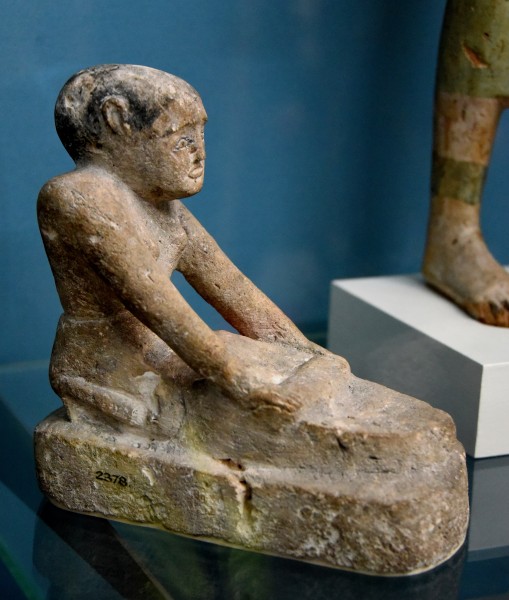
Egyptian Grinding Corn
POPULATION & SOCIAL CLASSES
The population of Egypt was strictly divided into social classes from the king at the top, his vizier, the members of his court, regional governors (eventually called 'nomarchs'), the generals of the military (after the period of the New Kingdom ), government overseers of worksites (supervisors), and the peasantry. Social mobility was neither encouraged nor observed for most of Egypt's history as it was thought that the gods had decreed the most perfect social order which mirrored that of the gods. The gods had given the people everything and had set the king over them as the one best-equipped to understand and implement their will. The king was the intermediary between the gods and the people from the Predynastic Period through the Old Kingdom (c. 2613-2181 BCE) when the priests of the sun god Ra began to gain more power. Even after this, however, the king was still considered god's chosen emissary. Even the latter part of the New Kingdom (1570-1069 BCE) when the priests of Amun at Thebes held greater power than the king, the monarch was still respected as divinely ordained.
Upper class
The king of Egypt (not known as a ' pharaoh ' until the New Kingdom period), as the gods' chosen man, "enjoyed great wealth and status and luxuries unimaginable to the majority of the population" (Wilkinson, 91). It was the king's responsibility to rule in keeping with ma'at , and as this was a serious charge, he was thought to deserve those luxuries in keeping with his status and the weight of his duties. Historian Don Nardo writes:
The kings enjoyed an existence largely free from want. They had power and prestige, servants to do the menial work, plenty of free time to pursue leisure pursuits, fine clothes, and numerous luxuries in their homes. (10)
The king is often depicted hunting and inscriptions regularly boast of the number of large and dangerous animals a particular monarch killed during his reign. Almost without exception, though, animals like lions and elephants were caught by royal game wardens and brought to preserves where the king then "hunted" the beasts while surrounded by guards who protected him.The king would hunt in the open, for the most part, only once the area had been cleared of dangerous animals.
Members of the court lived in similar comfort, although most of them had little responsibility. The nomarchs might also live well, but this depended on how wealthy their particular district was and how important to the king. The nomarch of a district including a site such as Abydos, for example, would expect to do quite well because of the large necropolis there dedicated to the god Osiris, which brought many pilgrims to the city including the king and courtiers. A nomarch of a region which had no such attraction would expect to live more modestly. The wealth of the region and the personal success of an individual nomarch would determine whether they lived in a small palace or a modest home. This same model applied generally to scribes.
Scribes & Physicians
Scribes were valued highly in ancient Egypt as they were considered specially chosen by the god Thoth, who inspired and presided over their craft. Egyptologist Toby Wilkinson notes how "the power of the written word to render permanent a desired state of affairs lay at the heart of Egyptian belief and practice" (204). It was the scribes' responsibility to record events so they would become permanent. The words of the scribes etched daily events in the record of eternity since it was thought that Thoth and his consort Seshat kept the scribes' words in the eternal libraries of the gods. A scribe's work made him or her immortal not only because later generations would read what they wrote but because the gods themselves were aware of it.Seshat, patron goddess of libraries and librarians, carefully placed one's work on her shelves, just as librarians in her service did on earth. Most scribes were male, but there were female scribes who lived just as comfortably as their male counterparts.A popular piece of literature from the Old Kingdom, known as Duauf's Instructions, advocates a love for books and encourages young people to pursue higher learning and become scribes in order to live the best life possible.
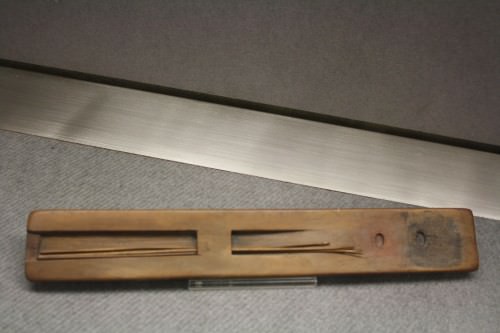
Egpytian Scribe's Palette
All priests were scribes, but not all scribes became priests. The priests needed to be able to read and write to perform their duties, especially concerning mortuary rituals. As doctors needed to be literate to read medical texts, they began their training as scribes. Most diseases were thought to be inflicted by the gods as punishment for sin or to teach a lesson, and so doctors needed to be aware of which god (or evil spirit, or ghost, or other supernatural agent) might be responsible. In order to perform their duties, they had to be able to read the religious literature of the time, which includes works on dentistry, surgery, the setting of broken bones, and the treatment of various illnesses. As there was no separation between one's religious and daily life, doctors were usually priests until later in Egypt's history when there is a secularization of the profession. All of the priests of the goddess Serket were doctors and this practice continued even after the emergence of more secular physicians.As in the case of scribes, women could practice medicine, and female doctors were numerous. In the 4th century BCE, Agnodice of Athens famously traveled to Egypt to study medicine since women were held in higher regard and had more opportunity there than in Greece.
Military
The military prior to the Middle Kingdom was made up of regional militias conscripted by nomarchs for a certain purpose, usually defense, and then sent to the king. At the beginning of the 12th Dynasty of the Middle Kingdom, Amenemhat I (c. 1991-c.1962 BCE) reformed the military to create the first standing army, thus decreasing the power and prestige of the nomarchs and putting the army directly under his control.
After this, the military was made up of upper-class leaders and lower-class rank and file members. There was the possibility of advancement in the military, which was not affected by one's social class. Prior to the New Kingdom, the Egyptian military was primarily concerned with defense, but pharaohs like Tuthmose III (1458-1425 BCE) and Ramesses II (1279-1213 BCE) led campaigns beyond Egypt's borders in expanding the empire. Egyptians generally avoided travel to other lands because they feared that, if they should die there, they would have greater difficulty reaching the afterlife. This belief was a definite concern of soldiers on foreign campaigns and provisions were made to return the bodies of the dead to Egypt for burial.
There is no evidence that women served in the military or, according to some accounts, would have wanted to. The Papyrus Lansing, to give only one example, describes life in the Egyptian army as unending misery leading to an early death. It should be noted, however, that scribes (especially the author of the Papyrus Lansing) consistently depicted their job as the best and most important, and it was the scribes who left behind most of the reports on military life.
Farmers & Laborers
The lowest social class was made up of peasant farmers who did not own the land they worked or the homes they lived in. The land was owned by the king, members of the court, nomarchs, or priests. A common phrase of the peasants to start the day was "Let us work for the noble!" The peasants were almost all farmers, no matter what other trade they cultivated (ferryman, for example). They planted and harvested their crops, gave most of it to the land owner, and kept some for themselves. Most had private gardens, which women tended while the men went out to the fields. Up until the time of the Persian invasion of 525 BCE, the Egyptian economy operated on the barter system and was based on agriculture. The monetary unit of ancient Egypt was the deben, which according to historian James C. Thompson, "functioned much as the dollar does in North America today to let customers know the price of things, except that there was no deben coin " (Egyptian Economy, 1). A deben was "approximately 90 grams of copper ; very expensive items could also be priced in debens of silver or gold with proportionate changes in value" (ibid). Thompson continues:
Since seventy-five litters of wheat cost one deben and a pair of sandals also cost one deben, it made perfect sense to the Egyptians that a pair of sandals could be purchased with a bag of wheat as easily as with a chunk of copper. Even if the sandal maker had more than enough wheat, she would happily accept it in payment because it could easily be exchanged for something else. The most common items used to make purchases were wheat, barley, and cooking or lamp oil, but in theory almost anything would do. (1)
The lowest class of society produced the goods used in trade and therefore provided the means for the entire culture to thrive.These peasants also made up the labor force which built the pyramids and other monuments of Egypt. When the Nile River flooded its banks, farming became impossible and the men and women would go to work on the king's projects. This work was always compensated, and the claim that any of the great structures of Egypt were built by slave labor - especially the claim of the biblical Book of Exodus that these were Hebrew slaves oppressed by Egyptian tyrants - is not supported by any literary or physical evidence at any time in Egypt's history. The claim by certain authors such as Egyptologist David Rohl that one misses the evidence of a mass enslavement of Hebrews by looking at the wrong time period is untenable since no such evidence exists no matter what period of Egyptian history one examines.
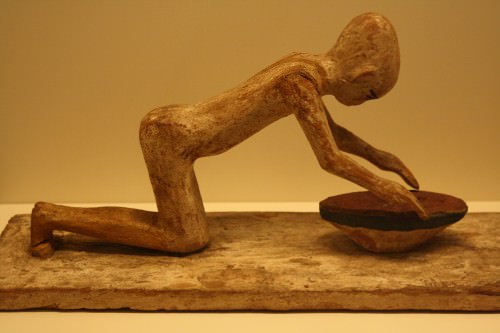
Egyptian Wooden Statue of a Woman Grinding Cereals
Work on monuments like the pyramids and their mortuary complexes, temples, and obelisks provided the only opportunity for upward mobility of the peasantry. Especially skilled artists and engravers were in high demand in Egypt and were better paid than unskilled laborers who simply moved the stones for the buildings from one place to another. Peasant farmers could also improve their status by practicing a craft to provide the vases, bowls, plates, and other ceramics people needed. Skilled carpenters could make a good living creating tables, desks, chairs, beds, storage chests, and painters were required for decoration of upper-class homes, palaces, tombs, and monuments.
Brewers were also highly respected, and breweries were sometimes run by women. In early Egyptian history, in fact, they seem to have been entirely operated by females. Beer was the most popular drink in ancient Egypt and was frequently used as compensation (wine was never that popular except among royalty). Workers at the Giza plateau were given a beer ration three times a day. The beverage was thought to have been given to the people by the god Osiris, and breweries were presided over by the goddess Tenenet. Beer was taken very seriously by the Egyptians as the Greek pharaoh Cleopatra VII (69-30 BCE) learned when she imposed a beer tax; her popularity plummeted more for this one tax than for her wars with Rome.
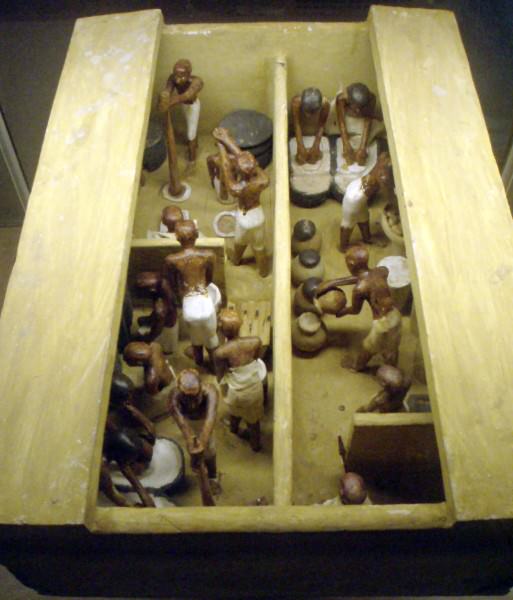
Ancient Egyptian Brewery and Bakery
The lower class could also find opportunity through work in metals, gems, and sculpting. The exquisite jewelry of ancient Egypt, gems mounted delicately in ornate settings, was created by members of the peasantry. These people, the majority of the Egyptian population, also filled the ranks of the army, and in rare cases, could become scribes. One's job and position in society, however, was usually handed down to one's son.
HOMES & FURNISHINGS
These artists were responsible for creating the furnishings for the lavish palaces, upper-class homes, and temples of Egypt as well as the tombs which were considered a person's eternal home. The king, his queen, and family lived in a palace which was richly decorated and had their needs tended to by servants. Scribes lived in or near the mortuary or temple complexes in special apartments and worked from scriptoriums while, as noted, nomarchs lived in greater or lesser accommodations according to their level of success. The peasants who provided the food for the upper classes also helped build their homes and supply them with chests, drawers, chairs, tables, and beds while they themselves could not afford any of these things.Nardo writes:
After a hard day's work, the farmers returned to their houses, which stood near the fields or in small rural villages located nearby. An average agricultural peasant's house featured walls made of mud bricks. The ceiling was fashioned from bundles of plant stems, and the floors consistend of hard-beaten earth covered by a layer of straw or mats made from reeds. There were one or two rooms (perhaps occasionally three) in which the farmer and his wife and children (if any) lived. In many cases, the stabled some or all of their farm animals in the same rooms. Because such modest homes lacked bathrooms, the residents had to use an outside latrine (a hole in the ground) to relieve themselves. Needless to say, water had to be hauled in buckets from the river or the nearest hand-dug well. (13)
By contrast, the palace of the pharaoh Amenhotep III (1386-1353 BCE), known as Malkata today, covered over 30,000 square meters (30 hectares) and included spacious apartments, conference rooms, audience chambers, a throne room and receiving hall, a festival hall, libraries, gardens, storerooms, kitchens, a harem, and a temple to the god Amun. The palace's outer walls were painted bright white while the interior colors were vibrant blues and yellows and greens. The entire structure, of course, had to be furnished and these articles were supplied by the lower class workers. In its time the palace was known as 'the house of rejoicing' and other similar names. It is known as Malkata today from the Arabic for 'place where things are picked up' owing to the massive debris field found there from the ruined palace.
The apartments and homes of scribes, as with those of the nomarchs, were opulent or modest depending on their level of success and the region in which they lived. The author of the Papyrus Lansing, Nebmare Nakht, claimed to live in grand style and to own land and slaves on par with a great king. This claim is no doubt true, too, as it is well established that priests were able to achieve the same level of wealth and power as some rulers in Egypt, and scribes would have had that same opportunity.
CRIME & PUNISHMENT
In ancient Egypt, as in every era of human history, the wealth of one person was often coveted by another who might choose to steal it, and in such cases, Egyptian law was swift. After the New Kingdom there was a police force, but even before this time, people were brought before the local official and charged with crimes ranging across the spectrum of criminal activity in the modern day. The state did not involve itself in local affairs unless the criminal had robbed or vandalized state property, such as robbing or defacing a tomb. Egyptologist Steven Snape writes:
The opportunities for criminal activity provided by the concentration of weatlth and property in towns and sities were seized upon wholeheartedly by some ancient Egyptians, just as they have been within all societies. Equally, significant centres of population and administration provided places where justice could be done and punishments meted out. However, the picture we get from ancient Egypt is that the administration of justice was pushed as far down to local lecel as possible. Villagers were expected to regulate their own affairs. (111)
Judgment and justice were ultimately the responsibility of the vizier, the king's right-hand man, who delegated that responsibility to officials beneath him, who further delegated to others. Even prior to the New Kingdom, there was an administrative building in any city called the Judgment Hall where cases were heard and verdicts rendered. In small towns and villages, these courts might be held in the market place. The local court was known as the kenbet, made up of community leaders of sound moral judgment, who would hear cases and decide on guilt or innocence. In the New Kingdom, the judgment hall and the kenbet were gradually replaced by oracular judgments in which the god Amun would be consulted directly on a verdict. This was accomplished by a priest of Amun asking the statue of the god a question and then interpreting his answer through various means. Sometimes the statue would nod its head, and other times there would be different signs given. If the defendant were found guilty, then punishment was swift.
Most punishments were fines for minor offenses, but rape, robbery, assault, murder, or tomb robbing could result in mutilation (cutting off of the nose, ears, or hands), incarceration, forced labor (essentially slavery for life in many cases), or death. The Great Prison at Thebes held convicted felons who were used for manual labor on the Temple of Amun at Karnak and other projects. There was no death row in Egyptian prisons since a person who was found guilty of a serious offense meriting the death penalty was executed immediately. There were no lawyers to argue a case and no appeals made after a verdict was rendered. The priests were entrusted by the people to give a fair and just hearing to any complaint and to judge according to the precepts of the gods, knowing that they faced a far worse fate in the afterlife should they fail in these duties.
FAMILY & LEISURE
Priests could be male or female. The chief priest of any religious cult was usually the same sex as the deity they served; the head of the Cult of Isis was female, that of the Cult of Amun, male. Priests could and did have families, and their children usually became priests after them.
SOCIAL MOBILITY WAS NEITHER ENCOURAGED NOR OBSERVED FOR MOST OF EGYPT'S HISTORY AS IT WAS THOUGHT THAT THE GODS HAD DECREED THE MOST PERFECT SOCIAL ORDER WHICH MIRRORED THAT OF THE GODS.
This was the paradigm for all of Egypt as far as succession went: the children carried on the occupation of the parents, usually the father. Women had almost equal rights in ancient Egypt. They could own their own businesses, their own land, and their own homes, could initiate divorce, enter into contracts with men, have abortions, and dispose of their own property as they saw fit; this was a level of sexual equality which no other ancient civilization approached and which the modern era only initiated - under duress - in the mid-20th century CE.
At least four women ruled Egypt, the best known two being Hatshepsut (1479-1458 BCE) and Cleopatra VII. This was not the norm, however, as most rulers were male. Royal women, for the most part, had slaves and servants who cared for the children and had no responsibility for cleaning or tending the home. They assisted their husbands in receiving foreign dignitaries and advancing certain policies.Las mujeres de las clases altas conocían un estilo de vida similar, pero podrían haber dedicado más tiempo a cuidar a los niños, mientras que en las clases más bajas, el cuidado del hogar y de los niños era responsabilidad exclusiva de la mujer.
Los matrimonios en el antiguo Egipto eran más un asunto secular que religioso. La mayoría de los matrimonios, en cualquiera de las clases, fueron arreglados por los padres. Las niñas solían estar casadas alrededor de los 12 años y los niños alrededor de los 15 años. Los niños reales a menudo estaban comprometidos con los reyes extranjeros para sellar tratados cuando eran poco más que bebés, aunque estaba prohibido que las mujeres dejaran Egipto como novias para gobernantes extranjeros. ya que se pensaba que no serían felices fuera de su propia tierra. Como Egipto era el mejor de todos los lugares, se consideraba irrespetuoso con una joven enviarla a algún lugar menor. Sin embargo, era perfectamente aceptable que las mujeres nacidas en el extranjero vinieran a Egipto como novias. Una vez en Egipto, a estas mujeres se les otorgó el mismo respeto que a los nativos. Las mujeres de todas las clases sociales fueron consideradas a la par con sus maridos,a pesar de que el hombre era considerado el jefe de la casa. Nardo nota:
Los maridos y las esposas de la clase alta cenaron, organizaron fiestas y salieron a cazar juntos, mientras que las mujeres adineradas y las más pobres compartieron muchos derechos legales con los hombres. De hecho, las mujeres del antiguo Egipto parecen haber disfrutado de más libertad en sus vidas privadas que las mujeres en la mayoría de las otras sociedades antiguas, incluso si los hombres tomaban la mayoría de las decisiones realmente importantes. Los hombres egipcios se beneficiaron de las relaciones positivas y amorosas tanto como sus esposas. (23)
Aunque las esposas de los granjeros no salían a los campos con sus maridos (en su mayor parte), aún tenían mucho trabajo para mantener la casa limpia, atendiendo a los animales que no se usaban para arar, y atendiendo las necesidades de los ancianos en la familia y criar a los hijos. Las mujeres y los niños también tendrían el jardín familiar, que era un recurso importante para cualquier familia. La limpieza era un valor importante de los egipcios, y la persona y el hogar debían reflejar eso. Las mujeres y los hombres de todas las clases se bañaban con frecuencia (los sacerdotes más que cualquier otra profesión) y se afeitaban la cabeza para prevenir los piojos y reducir el mantenimiento. Cuando una ocasión lo requería, usaban pelucas. Los hombres y las mujeres también usaban maquillaje, especialmente kohl debajo de los ojos, para ayudar con el resplandor del sol y mantener la piel suave.Las inscripciones y las pinturas de las tumbas también muestran a menudo a hombres y mujeres que aran y cosechan juntos en los campos o construyen un hogar.
Sin embargo, la vida de los antiguos egipcios no era todo trabajo. Encontraron mucho tiempo para divertirse a través de deportes, juegos de mesa y otras actividades. Deportes antiguos egipcios incluyen el hockey, balonmano, tiro con arco, natación, remolcador de la guerra, gimnasia, remo, y un deporte conocido como 'justa náutica,' que era un mar de batallaJugado en pequeñas embarcaciones en el río Nilo en el que un 'juster' intentó sacar al otro de su bote mientras un segundo miembro del equipo maniobraba la nave. A los niños se les enseñó a nadar a una edad temprana, y la natación fue uno de los deportes más populares, lo que dio lugar a otros juegos de agua. El juego de mesa de Senet fue extremadamente popular, representando el viaje de uno por la vida a la eternidad. La música, la danza, la gimnasia coreografiada y la lucha libre también eran populares, y entre las clases altas, la caza de animales grandes o pequeños era un pasatiempo favorito.

Juego de Senet
También había un deporte llamado "disparar a los rápidos", que es descrito por el dramaturgo romano Séneca el Joven (siglo I EC) que vivía en Egipto:
La gente se embarca en botes pequeños, dos en un bote y una hilera mientras que el otro saca agua. Luego son lanzados violentamente en los rápidos embravecidos. Por fin alcanzan los canales más angostos y, arrastrados por toda la fuerza del río, controlan el bote que corre a mano y hunden la cabeza hacia abajo, para gran terror de los espectadores. Creerías tristemente que a estas alturas ya estaban ahogados y abrumados por tanta masa de agua cuando, lejos del lugar donde cayeron, disparan como por una catapulta, navegando todavía, y la ola que se hunde no los sumerge sino que los transporta. a aguas tranquilas. (citado en Nardo, 20)
Después o incluso durante tales eventos, los espectadores disfrutaron su bebida favorita: cerveza. La receta favorita consumida con mayor frecuencia fue Heqet (también conocida como Hecht), una cerveza con sabor a miel similar a, pero más ligera que, la última hidromiel de Europa. Había muchos tipos de cerveza (generalmente conocida como zytum ), y con frecuencia se recetaba como medicina, ya que aligeraba el corazón y mejoraba el espíritu. La cerveza se elaboraba comercialmente y en el hogar y se disfrutaba especialmente en los muchos festivales que celebraban los egipcios.
FESTIVALES, ALIMENTOS Y ROPA
Todos los dioses egipcios tenían cumpleaños que debían celebrarse, y luego había cumpleaños individuales, los aniversarios de las grandes hazañas del rey, la observancia de los actos de los dioses en la historia humana, y también los funerales, las vigilias, los eventos de calentamiento de la casa, y nacimientos. Todos estos y más fueron celebrados con una fiesta o un festival.
Los festivales del antiguo Egipto eran cada uno de carácter único dependiendo de la naturaleza del evento, pero todos tenían en común el beber y el banquete. La dieta egipcia era principalmente vegetariana y consistía en granos (trigo) y vegetales. La carne era muy cara y, por lo general, solo la realeza podía permitírselo. La carne también era difícil de mantener en el clima árido de Egipto, por lo que los animales que fueron sacrificados ritualmente tenían que ser utilizados rápidamente.
Los festivales eran la oportunidad perfecta para permitirse todo tipo de excesos, incluida la ingesta de carne para aquellos que deciden hacerlo, aunque la autocomplacencia no era apropiada en todas las reuniones. Cada celebración o conmemoración tenía sus propias características únicas, como explica la historiadora Margaret Bunson:
La hermosa fiesta del valle, en honor del dios Amón, celebrada en Tebas, se celebró con una procesión de los ladridos de los dioses, con música y flores. La fiesta de Hathor, celebrada en Dendera, fue un tiempo de placer e intoxicación, de acuerdo con los mitos del culto de las diosas. La fiesta de la diosa Isis en Busiris y la celebración en honor a Bastet en Bubastis también fueron momentos de juerga e intoxicación. (91)
Estos festivales eran "de naturaleza normalmente religiosa y se celebraban en conjunto con el calendario lunar en los templos", pero también podían "conmemorar ciertos eventos específicos en la vida cotidiana de las personas" (Bunson, 90). En los funerales, como era de esperar, las personas vestidas de negro respetuoso (aunque los sacerdotes usualmente vestían de blanco) mientras que en los cumpleaños u otras celebraciones uno llevaba lo que quisiera. En el Festival de Bastet, las mujeres llevaban nada más que una falda corta que a menudo levantaban en honor a la diosa.
La ropa en el antiguo Egipto era de lino tejido de algodón. En el dinástico predinástico y tempranoLos períodos, las mujeres y los hombres llevaban simples kilts de lino. Los niños se desnudaron desde su nacimiento hasta alrededor de los diez años. Bunson señala que "con el tiempo, las mujeres llevaban una falda larga estilo imperio que colgaba justo debajo de sus pechos descubiertos. Los hombres usaban kilts simples. Estos podían teñirse en colores o diseños exóticos, aunque el blanco era probablemente el color utilizado en los rituales religiosos o cortes eventos "(67). En el tiempo del Imperio Nuevo, las mujeres usaban vestidos de lino que les cubrían los senos y les llegaban a los tobillos, mientras que los hombres usaban el kilt corto y, a veces, una camisa suelta. Las mujeres de clase baja, las esclavas y las sirvientas a menudo se muestran usando solo una falda escocesa durante el período del Nuevo Reino. En este mismo momento, las mujeres reales o nobles se muestran con vestidos ajustados desde el hombro hasta los tobillos y los hombres se ven con blusas transparentes y faldas.En el clima más frío de la estación lluviosa, se usaron mantos y chales.
La mayoría de la gente, de todas las clases sociales, iba descalza en la emulación de los dioses que no necesitaban calzado. En ocasiones especiales, o cuando alguien iba en un largo viaje o a un lugar donde podrían lesionarse los pies o en un clima más frío, usaban sandalias. Las sandalias más baratas estaban hechas de juncos tejidos, mientras que las más caras eran de cuero o madera pintada. Las sandalias no parecen tener una gran importancia para los egipcios hasta los Reinos Medio y Nuevo cuando llegaron a ser vistos como símbolos de estatus. Una persona que podía permitirse unas buenas sandalias obviamente estaba bien, mientras que la gente más pobre iba descalza. Estas sandalias a menudo se pintaban o decoraban con imágenes que podían ser bastante elaboradas.
En los tiempos de festivales, y hubo muchos de ellos durante todo el año egipcio, la ropa de los sacerdotes era blanca, pero las personas podían usar todo lo que quisieran o casi nada. Los egipcios querían vivir la vida al máximo, experimentar todo el tiempo que la tierra tenía para dar, y esperaban su continuación después de la muerte.

Momia egipcia masculina con amuletos
La vida terrenal de uno era solo una parte de un viaje eterno, y la muerte de uno se veía como una transición de una fase a la siguiente. Un entierro apropiado era de suma importancia para los antiguos egipcios de todas las clases. El cuerpo del fallecido fue lavado, vestido con envoltorios (momificados) y enterrado con aquellos objetos que querrían o necesitarían en el más allá. Cuanto más dinero uno tenía, por supuesto, más elaborada tumba y tumbabienes, pero incluso las personas más pobres proporcionaron tumbas adecuadas para sus seres queridos. Sin un entierro adecuado uno no podría esperar avanzar al Salón de la Verdad y aprobar el juicio de Osiris. Además, si una familia no honraba adecuadamente a los muertos al morir, estaban casi garantizando el regreso del espíritu de esa persona, lo que los perseguiría y causaría toda clase de problemas. Honrar a los muertos significaba no solo rendirle homenaje a ese individuo, sino también a las contribuciones y logros de la vida de la persona, todo lo cual fue posible gracias a la bondad de los dioses.
Living with mindfulness of kindness, harmony, balance, and gratitude toward the gods, they hoped to find their hearts lighter than the feather of truth when they came to stand in judgment before Osiris after death. Once they had been justified, they would pass on to an eternity of the very daily life they had left behind when they died. Everything in their lives which seemed lost at death was returned in the afterlife. Their emphasis, in every aspect of their lives, was to create a life worth living for an eternity. No doubt many individuals often failed at this, but the ideal was one worth striving for and imbued the daily lives of the ancient Egyptians with a meaning and purpose which infused and inspired their impressive culture.
LICENSE
Article based on information obtained from these sources:with permission from the Website Ancient History Encyclopedia
Content is available under License Creative Commons: Attribution-NonCommercial-ShareAlike 3.0 Unported. CC-BY-NC-SA License